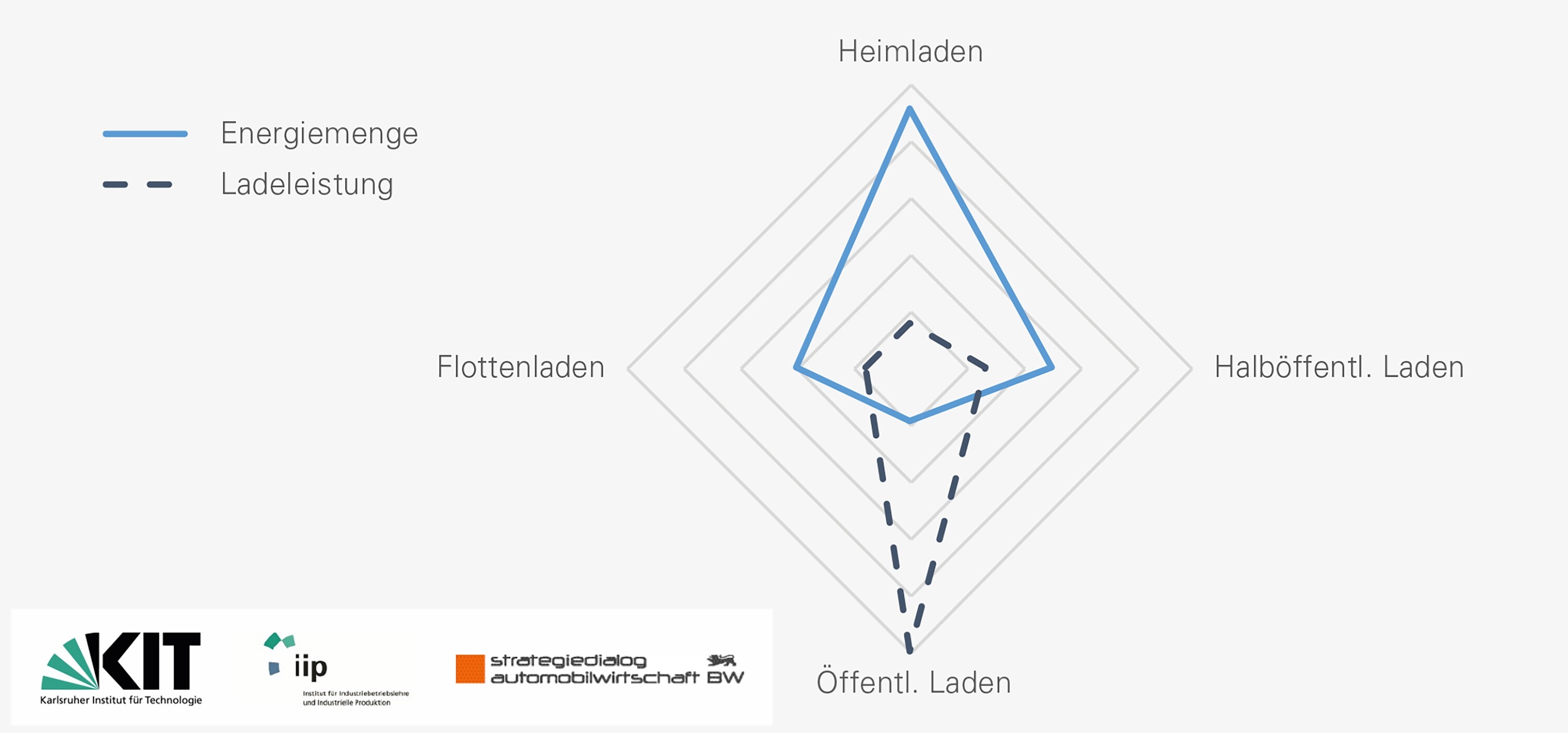
Within the framework of the SDA, charging scenarios for e-cars were developed for the year 2030. KIT-IIP developed a matrix to map the possible use of charging infrastructure in Stuttgart in 2030 with regard to energy consumption. It allows the identification of hotspots in the power grid.
The key outcome of the matrix is that the highest hotspot potential is expected for privately used e-cars (private and company cars) charged at the homes in the densely populate areas around the city (and in the rural areas). In this context, the hotspot potentials heavily depend on the charging categories and the associated charging power. While, in terms of energy quantity, the potential hotspots are mainly the densely populated areas around the city and in rural areas when privately used e-cars are charged at home, this category is associated with only low charging power. Semi-public charging is associated with comparatively higher charging power. However, the potential to create hotspots (employer charging in and around the city) is lower in terms of energy quantity. In the case of public charging (roadside parking in and around the city, petrol stations/
motorways around the city), it is especially the high charging power that can create potential hotspots from a grid perspective; however, the low energy quantity in this connection will generally have a lower potential to create hotspots. The charging of fleet e-cars is considered to have lower hotspot potential (employer charging in densely populated areas around the city) due to the medium charging power. The matrix and full report will be made available upon request.
